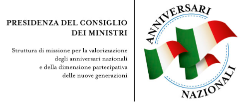Gramsci, Antonio
The Turin Communist Movement
Translator's presentation
The specific variations between Gramsci's two Italian texts on the Turin movement are covered in Flavio
Silvestrini's Introduzione, but a few general points should here be noted. Considerable confusion has arisen
over the nature of the two versions in which the essay appeared: The Communist Movement in Turin (published
in the various languages - see the editorial, above - of the journal "Communist International", November
1920) and The Turin Workers' Councils Movement ("L'Ordine Nuovo", 14 March 1921). Writers have often
assumed or claimed that the two essays are one and the same; this comment also applies to an English version
available on the Internet, which moreover omits about a quarter of Gramsci's text. There are, however,
differences between the two articles. It seems that the manuscript, the typed-up transcription (hand-corrected
by Gramsci) and its carbon copy were all sent to Moscow, so the prefatory lines (reproduced here at the start
of the article itself) to the later version explain that the article as there published is based on a retranslation
from the German translation of the original. Some differences between the two versions are thus explained,
while the others are dealt with by Flavio Silvestrini.
Additionally, and perhaps as an aid to its translators in Moscow, some simplification is apparent in the
"Communist International" version. This, for example, makes more use of the term "operai", as noun or
adjective, referring to industrial workers, as compared with "lavoratori" in the broader sense of "working
people", while the latter version makes a clearer distinction between the two. And while the latter version goes
into detail on the Turin Cooperative Alliance (omitted from the English version on the Internet), this is dealt
with more summarily for the international readership.
For some terms in the present translation, the nearest equivalent in the British context has been used; thus
"Trades Council" is used for "Camera del Lavoro". For "Sindacati professionali" we have used "Trade Unions",
while "sindacati" without any qualification appears simply as "unions"; workers' "delegati" elected in a factory
are "stewards" or "shop stewards".
At the end of the manuscript written for the Comintern journal, Gramsci's name was added by someone else
in Cyrillic, followed by "Gramchi", exactly as the name was printed at the end of the translation in number 14
of "L'Internationale Communiste". When, years later, the essay had been forgotten by nearly everyone, at the
end of the top copy of the manuscript's typed transcript - which bears occasional corrections in Gramsci's
hand - another person added the name "Antonio Gramsci" and a comment in Italian: "Addition. Antonio's
manuscript consists of 15 pages, without crossings-out (except for pages 13 and 14). It bears no date, and no
signature. Year - summer or autumn 1920. Archive of undated material. It could, even, it seems, be a report.
Greetings".The person making these various additions to the typescript then signed himself "Tu". A cross-check with
other documents, some with specimens of handwriting, contained in the Fondazione Istituto Gramsci's
fascicules 495-010a-187 and 188, indicates that, to a fair degree of certainty, the person in question was
Rigoletto Martini, whose main pseudonym was "Tutti", sometimes seen as "Tuti". On reaching Moscow from
the Spanish Civil War, he was entrusted with reorganizing the PCI in Italy, but was arrested by the fascists and
died in prison aged only 34. The combination of Martini's age, the pseudonym appearing as an abbreviated
signature, and the handwriting all point to him as author of the addendum.
| Language | eng |
| Names |
[author] Gramsci, Antonio |
| Subjects |
movimento consiliare torinese
Torino 1917
Turin 1917
|

